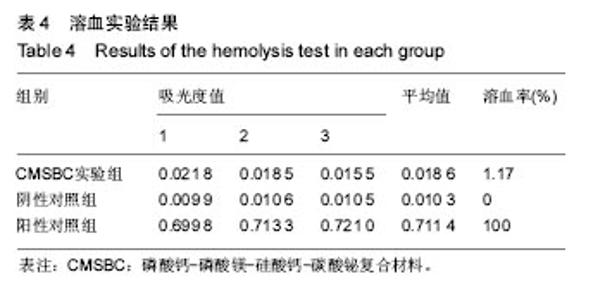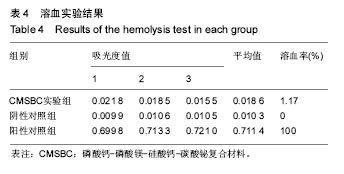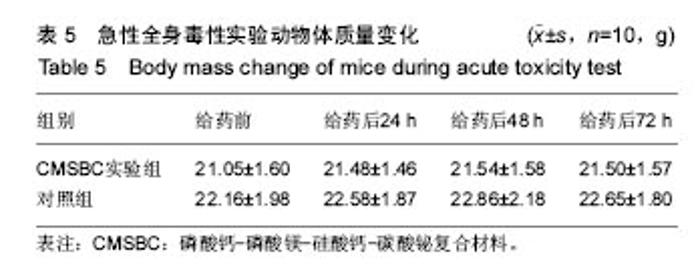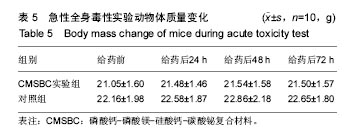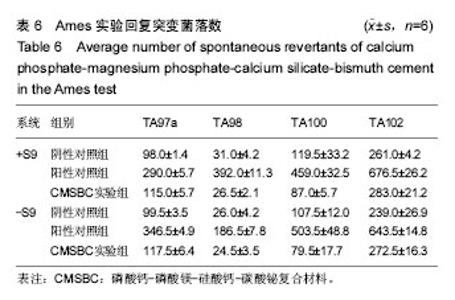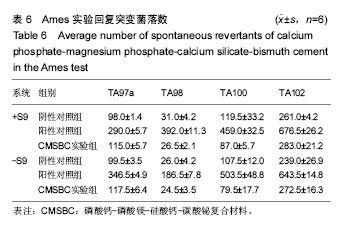| [1]Bryan EB, Woollard G, Mitchell WC. Nonsurgical repair of furcal perforations: a literature review. Gen Dent. 1999;47(3): 274-278.[2]El-Khodary HM, Farsi DJ, Farsi NM, et al. Sealing Ability of Four Calcium Containing Cements used for Repairing Furcal Perforations in Primary Molars: An in vitro study. J Contemp Dent Pract. 2015;16(9):733-739.[3]Roda RS. Root perforation repair: surgical and nonsurgical management. Pract Proced Aesthet Dent. 2001;13(6): 467-472.[4]Siew K, Lee AH, Cheung GS. Treatment Outcome of Repaired Root Perforation: A Systematic Review and Meta-analysis. J Endod. 2015;41(11):1795-1804.[5]Srinivasan R, Bhagabati N, Rajput A, et al. Non surgical repair of iatrogenic furcal perforation of radix entomolaris. Med J Armed Forces India. 2015;71(Suppl 2):S422-424.[6]Ambard AJ, Mueninghoff L. Calcium phosphate cement: review of mechanical and biological properties. J Prosthodont. 2006;15(5):321-328.[7]Zeng D, Xia L, Zhang W, et al. Maxillary sinus floor elevation using a tissue-engineered bone with calcium-magnesium phosphate cement and bone marrow stromal cells in rabbits. Tissue Eng Part A. 2012;18(7-8):870-881.[8]Gandolfi MG, Ciapetti G, Taddei P, et al. Apatite formation on bioactive calcium-silicate cements for dentistry affects surface topography and human marrow stromal cells proliferation. Dent Mater. 2010;26(10):974-992.[9]Dawood AE, Parashos P, Wong RH, et al. Calcium silicate-based cements: composition, properties, and clinical applications. J Investig Clin Dent. 2015 Oct 5. [Epub ahead of print] [10]Selvamani T, Gnana Sundara Raj B, Anandan S, et al. Synthesis of morphology-controlled bismutite for selective applications. Phys Chem Chem Phys. 2016;18(11):7768-7779.[11]Li K,Shen QY, Xie YT. Preparation and characterization of calcium-magnesium phosphate cements. Adv Mater Res. 2014;1058:83-86.[12]沈晴昳,李恺,李国强.新型钙镁磷酸复合材料理化机械性能的初步评价[J].口腔医学,2016,36(10):865-869.[13]黄晢玮,薛淼.口腔材料的生物相容性[J].口腔材料器械杂志, 2010,19(1):41-50.[14]Wataha JC. Predicting clinical biological responses to dental materials. Dent Mater. 2012;28(1):23-40.[15]Zhang J, Liu W, Schnitzler V, et al. Calcium phosphate cements for bone substitution: chemistry, handling and mechanical properties. Acta Biomater. 2014;10(3): 1035-1049.[16]黄顺勇.磷酸钙骨水泥的临床应用与研究进展[J].中外医学研究,2015, 13(11):162-164.[17]李茂红,姚宁,屈树新. 提高磷酸钙骨水泥抗压强度的方法及相关机理[J].材料导报,2014,28(23):86-90.[18]段星泽,廖建国,李艳群,等. 磷酸镁水泥制备及生物医学应用研究进展[J].材料导报,2016,30(7):60-67.[19]吴子征,孟德华,张键. 磷酸镁骨水泥粘接固定犬胫骨平台骨折的实验研究[J].中国临床医学,2009,16(1):133-135.[20]Iimori Y, Kameshima Y, Yasumori A, et al. Effect of solid/solution ratio on apatite formation from CaSiO3 ceramics in simulated body fluid. J Mater Sci Mater Med. 2004;15(11):1247-1253.[21]Xue W, Liu X, Zheng X, et al. In vivo evaluation of plasma-sprayed wollastonite coating. Biomaterials. 2005; 26(17):3455-3460.[22]Widbiller M, Lindner SR, Buchalla W, et al. Three-dimensional culture of dental pulp stem cells in direct contact to tricalcium silicate cements. Clin Oral Investig. 2016;20(2):237-246.[23]江明性.药理学[M].3版.北京:人民卫生出版社,1992:262.[24]Stratton CW, Warner RR, Coudron PE, et al. Bismuth-mediated disruption of the glycocalyx-cell wall of Helicobacter pylori: ultrastructural evidence for a mechanism of action for bismuth salts. J Antimicrob Chemother. 1999; 43(5):659-666.[25]孙红哲,张丽,司徒嘉怡.含铋类药物的生物化学和药物化学研究进展[J].中国临床药理学杂志,2002,18(4):297-301.[26]刘爱旗,夏璐. CCK-8法与MTT法检测兔成纤维细胞活性的比较[J].中国医学创新,2013,6(2):12-13.[27]陈冲,焦宁,徐瑞荣,等. 台盼蓝拒染法、MTT法、CCK-8法在研究AS2O3细胞毒性作用中的意义[J].中国医药导报, 2013,10(12): 24-26.[28]Sun F, Mao P, Wang C, et al. Cytotoxic Effects of One-step Self-etching Dental Adhesives on Human Periodontal Ligament Fibroblasts In Vitro. J Adhes Dent. 2016;18(2): 99-109.[29]Gorbet MB, Sefton MV. Biomaterial-associated thrombosis: roles of coagulation factors, complement, platelets and leukocytes. Biomaterials. 2004;25(26):5681-5703.[30]Shen X, Su F, Dong J, et al. In vitro biocompatibility evaluation of bioresorbable copolymers prepared from L-lactide, 1, 3-trimethylene carbonate, and glycolide for cardiovascular applications. J Biomater Sci Polym Ed. 2015;26(8):497-514.[31]Zhang Q, Zhou Q, Shan G, et al. Mechanical properties and biological evaluation of buffalo horn material. Sheng Wu Yi Xue Gong Cheng Xue Za Zhi. 2014;31(6):1298-1304.[32]Mercado-Pagán ÁE, Ker DF, Yang Y. Hemocompatibility evaluation of small elastomeric hollow fiber membranes as vascular substitutes. J Biomater Appl. 2014;29(4):557-565.[33]魏煦,李彦,吴建青,等.国产金属烤瓷材料生物安全性的初步评价[J].口腔材料器械,2009,18(4):179-181.[34]张文云,沈毅,李南,等. 牙科纤维/树脂复合材料的生物安全性研究[J]. 解放军医学杂志, 2004, 29(4):345-347.[35]万昌秀.材料的生物学性能及其评价[M].成都:四川大学出版社, 2008:60-64.[36]Geetha CS, Sabareeswaran A, Mohanan PV. Pre-clinical evaluation of titanium nitride coated titanium material. Toxicol Mech Methods. 2012;22(2):144-150.[37]Assad M, Chernyshov A, Leroux MA, et al. A new porous titanium-nickel alloy: part 2. Sensitization, irritation and acute systemic toxicity evaluation. Biomed Mater Eng. 2002;12(4): 339-346.[38]励永明.评价生物材料不同给予方法致急性全身毒性作用的实验初探[J]. 口腔材料器械杂志,2000,9(2):83-85.[39]Han Q, Zhang B, Chen B, et al. Evaluation of a bioactive bone-inducing material consisting of collagen scaffolds and collagen-binding bone morphogenetic protein 2. J Biomed Mater Res A. 2014;102(9):3093-3101.[40]夏太宝. 丝素蛋白/双相磷酸钙/硫酸钙复合骨水泥的生物安全性研究[D].苏州:苏州大学,2010.[41]Woodruff RS, Li Y, Yan J, et al. Genotoxicity evaluation of titanium dioxide nanoparticles using the Ames test and Comet assay. J Appl Toxicol. 2012;32(11):934-943.[42]Beevers C, Adamson RH. Evaluation of 4-methylimidazole, in the Ames/Salmonella test using induced rodent liver and lung S9. Environ Mol Mutagen. 2016;57(1):51-57.[43]郝和平.医疗器械生物学评价标准实施指南[M].北京:中国标准出版社,2000:16-17.[44]Yamarik TA. Safety assessment of dichlorophene and chlorophene. Int J Toxicol. 2004;23 Suppl 1:1-27. |


